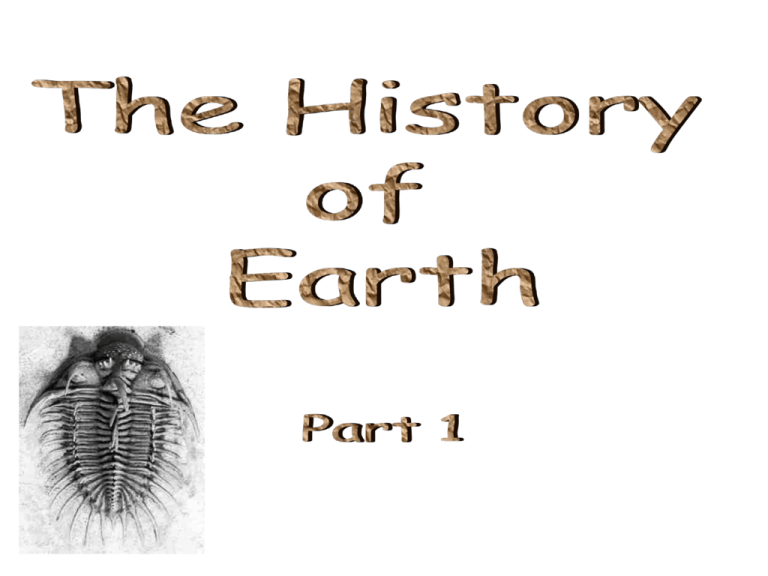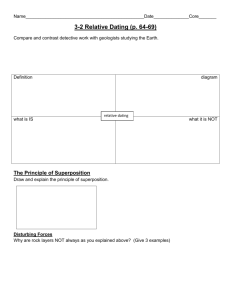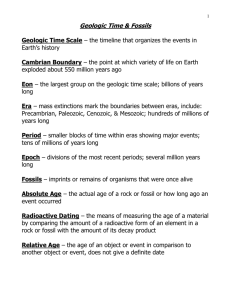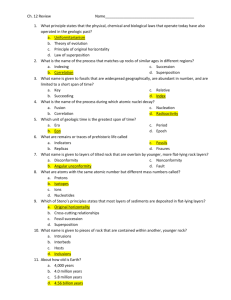Relative Dating Notes
advertisement

A Little Bit of History… • The history of geologic time begins with the human interest in mining. • Interests in rock units began to flourish with commercial mining in the 1500s and 1600s • People began to identify strata (rock layers) by the types of fossils that were found within them. • Two scientists were credited with contributing the most research to this area -- Nicolaus Steno and James Hutton . Nicolaus Steno Adapted two geologic principles 1. Law of Superposition : sedimentary rocks are found with the oldest on the bottom and youngest on top. E.x. Paint layers 2. Principle of Original Horizontality: If left undisturbed rock layers will stay in horizontal order James Hutton 18th-century Scottish physician and farmer Studied his farm land for geologic changes *The Present is the Key to the Past Principle of Uniformitarianism: geologic processes from the past are the same as the current geologic processes. E.x. What happened then happens now Relative Age: gives the age of a rock layer based on the ages of layers around it (younger or older) What sort of events can change the order of rock layers? Law of Crosscutting Relationships Fault or body of rock is younger than any other body of rock that it cuts through. Igneous intrusions that may be uplifted to the surface would also be younger than the rock they push through Unconformities- breaks in geologic time where rock layers erode away or when sediment isn’t deposited







